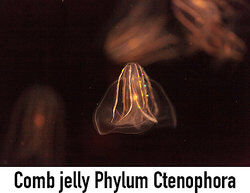
Luminescence is a process of giving off light without obtaining or generating heat. This can be caused by chemical or biochemical reactions, activity of subatomic particles, radiation or stress on a crystal.
Examples of Luminescence
- Chemoluminescence - This process creates light through a chemical reaction. Common applications are glow sticks (cyalume sticks) and the forensic application for locating blood using luminol.
- Crystalloluminescence - Light is made during crystallization and it is theorized that the light comes from small fractures in the crystal.
- Electroluminescence - This occurs when an electromagnetic field is applied to solid or gaseous material. This excites the molecules and the substance glows. LEDs, or light-emitting diodes, are found in flat panel televisions and computer monitors.
- Fluorescence - Fluorescent materials absorb light and then they glow for a certain time. In fluorescent light bulbs an electrical current runs through mercury vapor producing electrons that hit material that is painted on the inside of the bulb.
- Phosphorescence - Phosphorescent materials also glow in the dark; but, their glow lasts longer than fluorescence, making them good for glow in the dark applications. Clocks and watches have phosphorescent paint on them.
- Photoluminescence - This is a process where a substance absorbs photons and then re-emits them. The electromagnetic energy is absorbed at a certain wavelength and is emitted at a different wavelength which is most commonly longer.
- Radioluminescence - Light from this process is made from using radiation or high energy particles to bombard a substance. This is used in medical physics and radar screens.
- Sonoluminescence - This produces light from bubbles that are hitting one another when sound waves passed through the liquid. The sound waves cause bubbles which emit light when popped.
- Thermoluminescence - Light comes from using heat to release of electrons that were trapped in a substance. This process is used in archaeological dating.
- Triboluminescence - In this process, the light coming from the substance is made by friction, like rubbing, crushing, or scratching. The friction pulls apart chemical bonds, thus causing electrical charges.
Examples of Bioluminescence
Bioluminescence is a type of chemoluminescence that is used by living creatures. For example:
- Angler fish - These fish use bioluminescent lures to trap prey. The light comes from bacteria that used bioluminescence to communicate.
- Comb jellies - These glow all over and when a chunk is bitten off by an enemy, the chunk continues to glow, making that creature more visible to predators.
- Deep sea creatures including fish, crustaceans, and squid like the hatchetfish - These creatures can adjust their light output to eliminate their shadow.
- Earthworms - Some secrete a substance that glows that is thought to startle any predators.
- Fireflies - These insects have a chemical reaction in their bodies that converts lucifern into another form and that reaction produces light. They are also called lightning bugs.
- Fungi - There are over 70 species that are bioluminescent. The green glow may attract bugs to help spread spores, may attract the bugs' predators, or may have no particular function.
- Glow worms - These are the larval stage of gnats and these larvae produce sticky lines to catch prey. Then they secrete a glowing substance to attract the prey.
- Loose jaw dragonfish - These fish send out a red light from under their eyes that is essentially night vision.
- Plankton - Also called dinoflagellates, some plankton use their light as a startle mechanism. This may attract larger fish to attack the plankton's predator.
- Sea cucumbers - These have skin that is sticky and glows. It rubs off on their predators, making them more susceptible to other predators.
- Sea worms - Five species of sea worms launch capsules filled with liquid that break open and bioluminescence for a few seconds. This is done to distract predators.
So now you have seen both luminescence and bioluminescence.